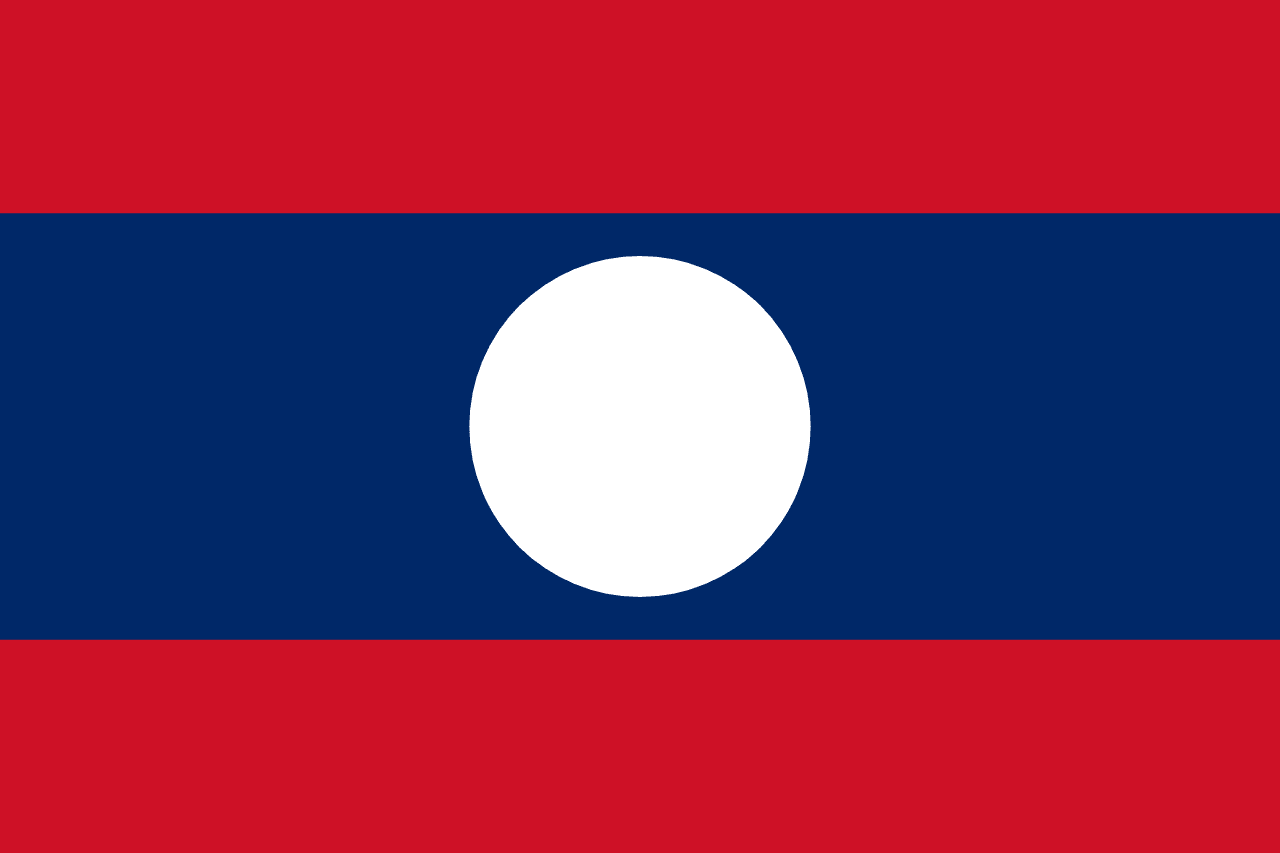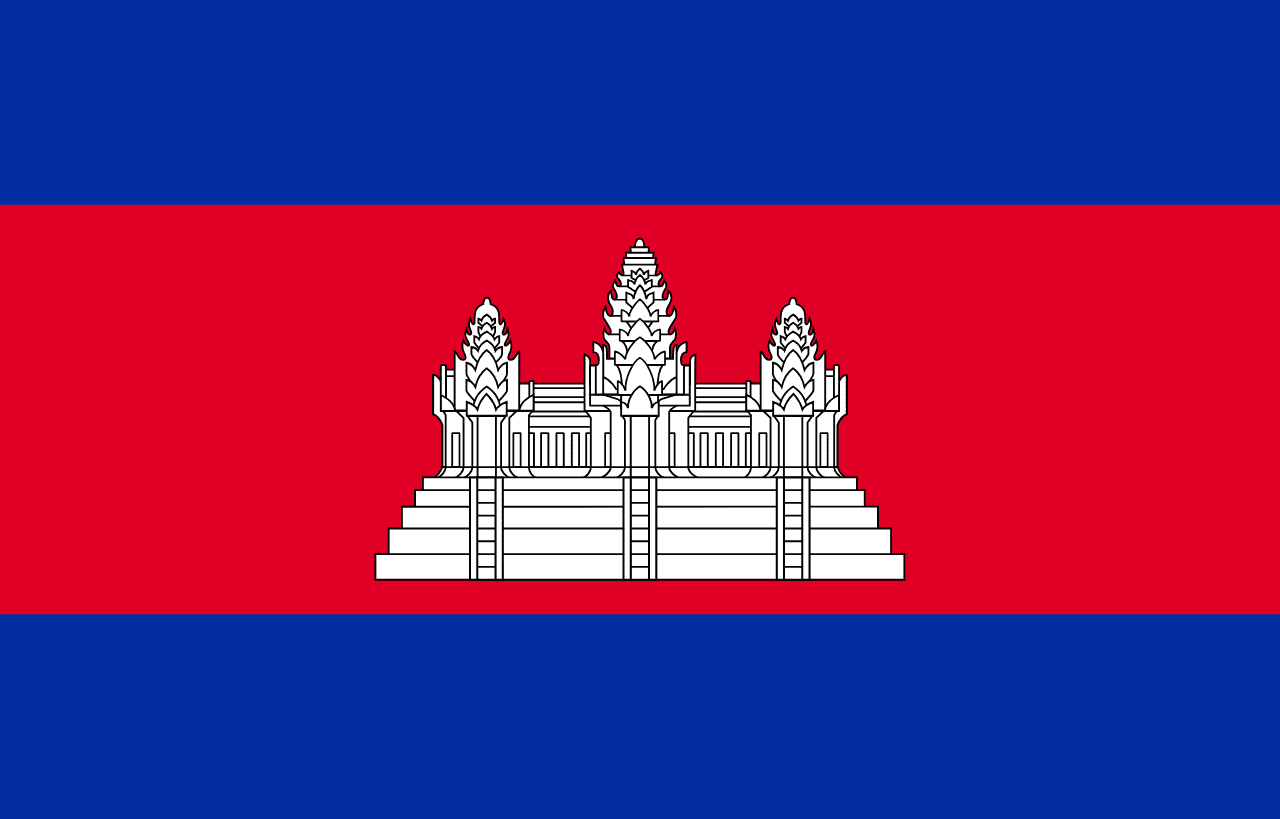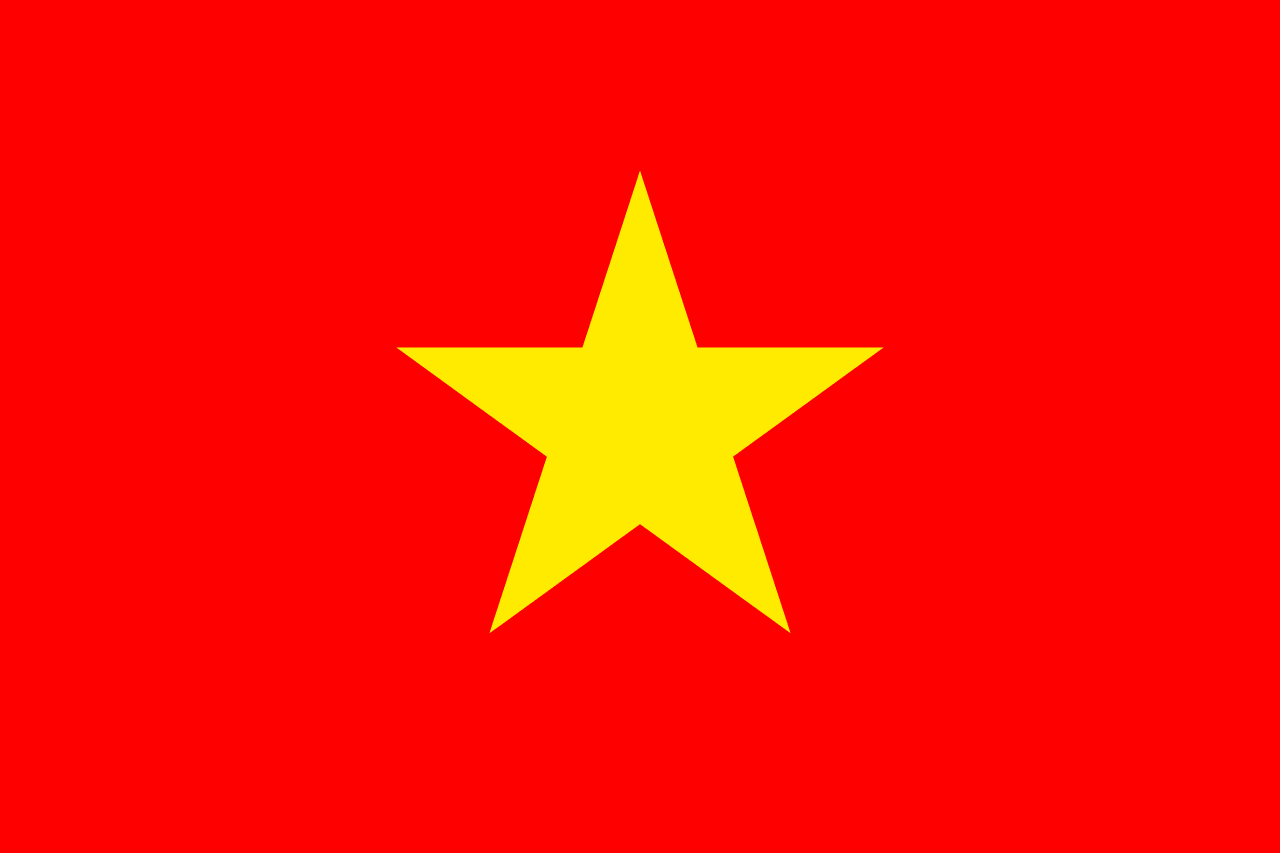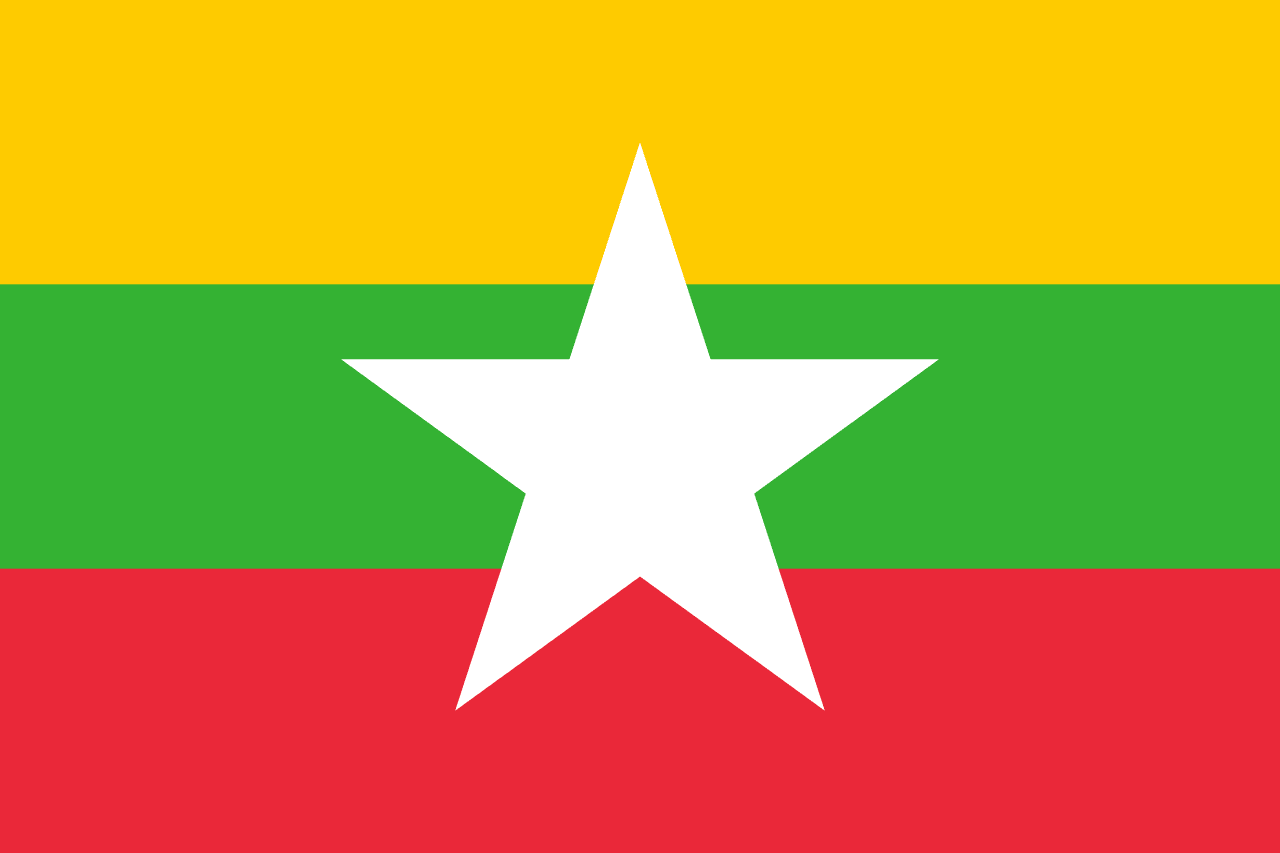Thailand Flag Meaning
Five horizontal stripes with red at top and bottom, white in the second and fourth positions, and blue in the center, representing the nation and the people, the purity of Buddhism, and the monarchy, designed by King Rama VI during World War I to show solidarity with the Allies.
- Continent
- Asia
- Adopted
- 1917
- Ratio
- 2:3
- Colors
- red, white, blue
- Designer
- King Vajiravudh (Rama VI)

Symbolism
Red Stripes: Represent the nation and the blood of the Thai people, symbolizing the sacrifice and loyalty of citizens who have defended Thailand's independence throughout its history as the only Southeast Asian country never to be colonized.
White Stripes: Represent the purity of Buddhism, the dominant religion in Thailand, symbolizing the spiritual foundation that guides Thai society and the moral principles that shape the nation's character.
Blue Stripe: Represents the monarchy and the institution of the king, symbolizing the royal family that has united Thailand for centuries and the stability provided by the constitutional monarchy system.
Tricolor Design: The flag follows the tricolor pattern popular during World War I, showing Thailand's solidarity with the Allied powers and its emergence as a modern nation-state on the world stage.
History
- 6th-13th Century: Various Thai kingdoms including Dvaravati and Lanna developed in the region, with Buddhism becoming established as the dominant religion and Thai culture taking shape.
- 1238-1438: The Sukhothai Kingdom emerged as the first major Thai state, developing the Thai alphabet, art, and culture while establishing the foundations of Thai identity and governance.
- 1351-1767: The Ayutthaya Kingdom became one of Southeast Asia's most powerful states, controlling extensive territories and engaging in trade with Europe, China, and neighboring countries.
- 1767-1782: Burmese invasion destroyed Ayutthaya, but King Taksin established a new kingdom at Thonburi, beginning the recovery and restoration of Thai independence.
- 1782-1932: The Chakri Dynasty established Bangkok as the capital and ruled as absolute monarchs, modernizing Thailand while skillfully avoiding European colonization through diplomatic maneuvering.
- September 28, 1917: King Vajiravudh (Rama VI) adopted the current flag design, replacing earlier versions to show solidarity with World War I Allies and modernize Thailand's national symbols.
- June 24, 1932: A bloodless revolution ended absolute monarchy and established constitutional monarchy, beginning Thailand's transition to modern democratic governance while preserving royal institutions.
- 1941-1945: Thailand allied with Japan during World War II but maintained some independence, later switching sides to join the Allies before the war's end.
- 1950s-1970s: Military governments dominated Thai politics during the Cold War, with the country serving as a key U.S. ally in Southeast Asia during the Vietnam War.
- 1980s-1990s: Economic boom transformed Thailand into a 'Tiger Economy,' bringing rapid industrialization, urbanization, and integration into global markets.
- 1997-2006: The Asian Financial Crisis devastated Thailand's economy, but recovery under Prime Minister Thaksin Shinawatra brought new populist policies and political polarization.
- 2006-Present: Political instability with military coups in 2006 and 2014, mass protests, and ongoing tensions between different political factions have challenged democratic institutions.
Trivia
- Thailand is the only Southeast Asian country that was never colonized by European powers, earning it the name 'Land of the Free' (Prathet Thai).
- The flag represents a country where Buddhism is practiced by about 95% of the population, with over 40,000 temples (wats) throughout the kingdom.
- Thai cuisine is recognized worldwide for its balance of sweet, sour, salty, and spicy flavors, with dishes like pad thai, green curry, and tom yum soup being internationally popular.
- The Thai monarchy is highly revered, with strict lese majeste laws protecting the royal family from criticism, and the king serving as a unifying figure for the nation.
- Thai is the official language, written in its own unique script, and belongs to the Tai-Kadai language family, though regional dialects vary significantly across the country.
- Thailand is the world's largest producer of natural rubber and a major exporter of rice, with agriculture remaining important despite rapid industrialization.
- The country is famous for its traditional arts including classical dance, Muay Thai martial arts, intricate wood carving, and silk weaving.
- Thai architecture features distinctive temples with elaborate decorations, golden spires, and colorful tiles, with the Grand Palace in Bangkok being the most famous example.
- The flag flies over a country where traditional festivals like Songkran (water festival) and Loy Krathong (lantern festival) attract millions of tourists annually.
- Thailand has a constitutional monarchy with frequent military interventions, experiencing 13 successful coups since 1932, reflecting ongoing political tensions.
- The country is a major tourist destination, with over 35 million visitors annually attracted to beaches, temples, cultural sites, and vibrant cities like Bangkok.
- Traditional Thai music features instruments like the khong wong (gong circle), ranat (xylophone), and pi (oboe), often accompanying classical dance performances.
- Thailand faces challenges including political polarization, environmental issues, an aging population, and economic inequality between urban and rural areas.
- The flag represents a country that has successfully balanced tradition and modernity, maintaining cultural identity while becoming a regional economic power.
- Thai society emphasizes concepts like 'sanuk' (fun), 'sabai' (comfort), and respect for hierarchy, creating a distinctive cultural approach to life and relationships.
Related Countries

Laos
Asia
Three horizontal stripes of red, blue, and red with a white circle centered on the blue stripe, representing the blood of independence, the Mekong River, and the full moon reflecting unity of the Lao people.

Cambodia
Asia
Three horizontal stripes of blue, red (double width), and blue with a white depiction of Angkor Wat temple in the center, representing the nation, the king, and the sacred temple that symbolizes Cambodia's glorious past and cultural heritage.

Vietnam
Asia
A red field with a large yellow five-pointed star in the center, representing the blood shed for independence and the unity of workers, peasants, intellectuals, youth, and soldiers under Communist Party leadership in the struggle for national liberation and socialist construction.

Myanmar
Asia
A horizontal tricolor of yellow, green, and red with a large white five-pointed star in the center. Adopted in 2010, the flag symbolizes unity and a new era for Myanmar.

Malaysia
Asia
Fourteen alternating red and white stripes with a blue canton containing a yellow crescent and 14-pointed star, representing the federation of Malaysian states and territories united under Islam and royal authority.

Bangladesh
Asia
A dark green field with a red circle positioned slightly toward the hoist side, representing the lush Bengali landscape and the sun rising over Bengal, as well as the blood shed during the Liberation War of 1971 and the new dawn of independence.